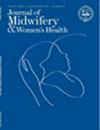Feasibility of Remote Intensive Monitoring: A Novel Approach to Reduce Black Postpartum Maternal Cardiovascular Complications
Abstract
Introduction
Approximately 53% of maternal mortality occurs in the postpartum period, a time with little monitoring and health surveillance. The objective of this study was to test the feasibility, usability, appropriateness, and acceptability of remote low-burden physiologic monitoring of Black postpartum women, using a novel soft wearable patch and home vital sign monitoring for the first 4 weeks postpartum.
Methods
A prospective longitudinal cohort feasibility study of 20 Black postpartum women was conducted using home monitoring equipment and a wearable patch with physiologic sensors measuring temperature, pulse oximetry, blood pressure, electrocardiogram (ECG), heart rate, and respiration twice daily during the first 4 weeks postpartum. Feasibility, acceptability, appropriateness, and usability were measured at the end of the study with the Feasibility of Intervention Measure, Acceptability of Intervention Measure, Intervention Appropriateness Measure, and System Usability Scale.
Results
Twenty Black women were recruited and consented to participate in the study. Remote physiologic monitoring using a wearable patch and home monitoring equipment was rated as feasible (93%), acceptable (93%), appropriate (92%), and useable (80%). During the first 2 weeks postpartum, remote home monitoring detected that 60% of the women had blood pressures exceeding 140/90 mm Hg. The wearable patch provided useable data on ECG, heart rate, heart rate variability, pulse oximetry, and temperature.
Discussion
Our research suggests that remote monitoring in the first 4 weeks postpartum has the potential to identify Black women at risk for postpartum complications.


 求助内容:
求助内容: 应助结果提醒方式:
应助结果提醒方式:


